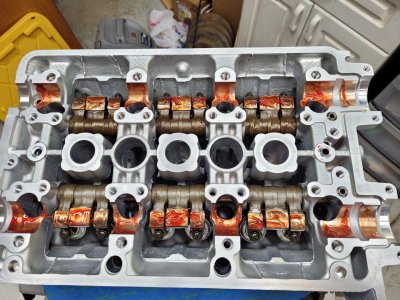Just did my valve cover gaskets and noticed that my camshaft lobes were totally DRY after about 7 months! Arrg, I assumed that modern day mobil one 10-30 would leave a little bit on the lobes – not so. As we know a very large part of engine wear occurs at start up. Crank/rod bearings and cams take a beating while waiting for the oil pump system to get oil to all surfaces. There is a lag between when you start you the engine and when oil gets to all critical surfaces. What do we know about pre –startup circulating oil for the NSX?. I assume a fuse should be pulled for ignition and fuel? Different engines take different crank times to get oil to the heads. In the old days we would have the valve covers off, spin the oil pump with a drill and actually see when the oil came to the heads, but I assume that in our situation we can only guess on a good cranking time in seconds. I do let my car set for up to a year at a time and feel the need to pre-lube after an extended winter. To repeat, what fuses to pull and how long to run dry to get oil to camshafts? From my experience some engines oil almost instantly and some take a good 45 seconds. Any thoughts on our motors greatly appreciated. I'm using mobil 1 10-30 fwiw. TIA
-
Protip: Profile posts are public! Use Conversations to message other members privately. Everyone can see the content of a profile post.
ENGINE PRE-OILING PROCEDURE
- Thread starter TANTO
- Start date







